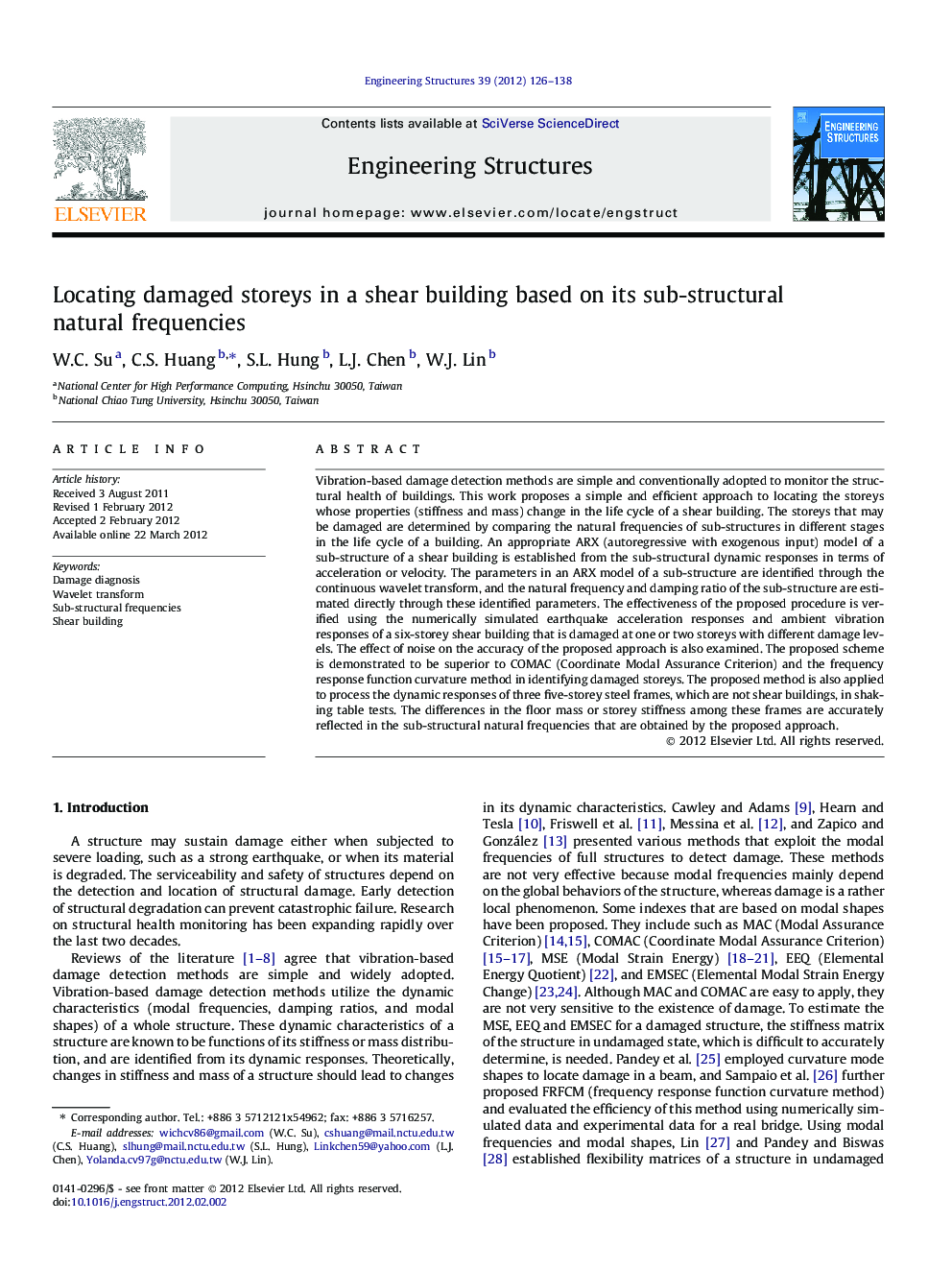| Article ID | Journal | Published Year | Pages | File Type |
|---|---|---|---|---|
| 267534 | Engineering Structures | 2012 | 13 Pages |
Vibration-based damage detection methods are simple and conventionally adopted to monitor the structural health of buildings. This work proposes a simple and efficient approach to locating the storeys whose properties (stiffness and mass) change in the life cycle of a shear building. The storeys that may be damaged are determined by comparing the natural frequencies of sub-structures in different stages in the life cycle of a building. An appropriate ARX (autoregressive with exogenous input) model of a sub-structure of a shear building is established from the sub-structural dynamic responses in terms of acceleration or velocity. The parameters in an ARX model of a sub-structure are identified through the continuous wavelet transform, and the natural frequency and damping ratio of the sub-structure are estimated directly through these identified parameters. The effectiveness of the proposed procedure is verified using the numerically simulated earthquake acceleration responses and ambient vibration responses of a six-storey shear building that is damaged at one or two storeys with different damage levels. The effect of noise on the accuracy of the proposed approach is also examined. The proposed scheme is demonstrated to be superior to COMAC (Coordinate Modal Assurance Criterion) and the frequency response function curvature method in identifying damaged storeys. The proposed method is also applied to process the dynamic responses of three five-storey steel frames, which are not shear buildings, in shaking table tests. The differences in the floor mass or storey stiffness among these frames are accurately reflected in the sub-structural natural frequencies that are obtained by the proposed approach.
► Propose an efficient approach to locating the storeys whose properties change. ► The natural frequencies of sub-structures in different stages are used. ► The continuous wavelet transform are applied to find needed natural frequencies. ► Numerically simulated noisy responses validate the proposed approach. ► Dynamic responses of frames from shaking table tests are further processed.
